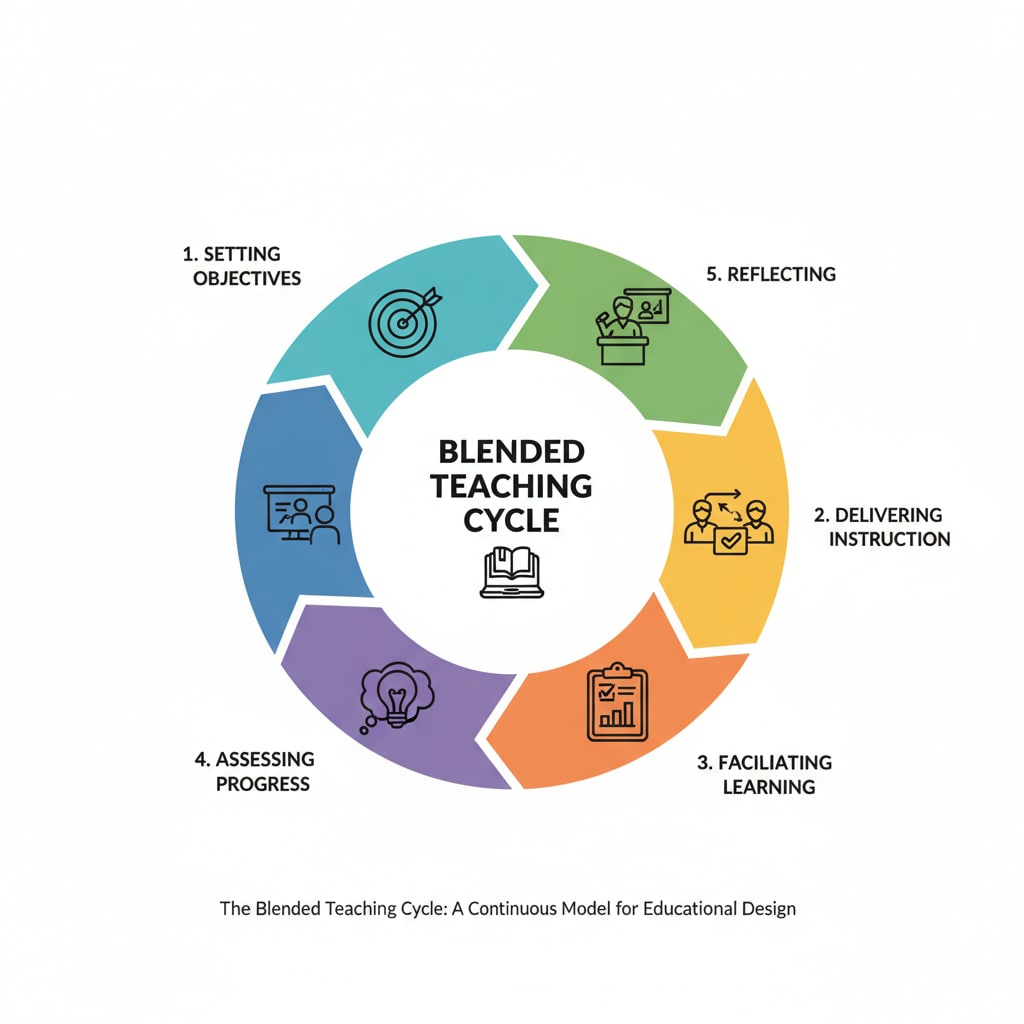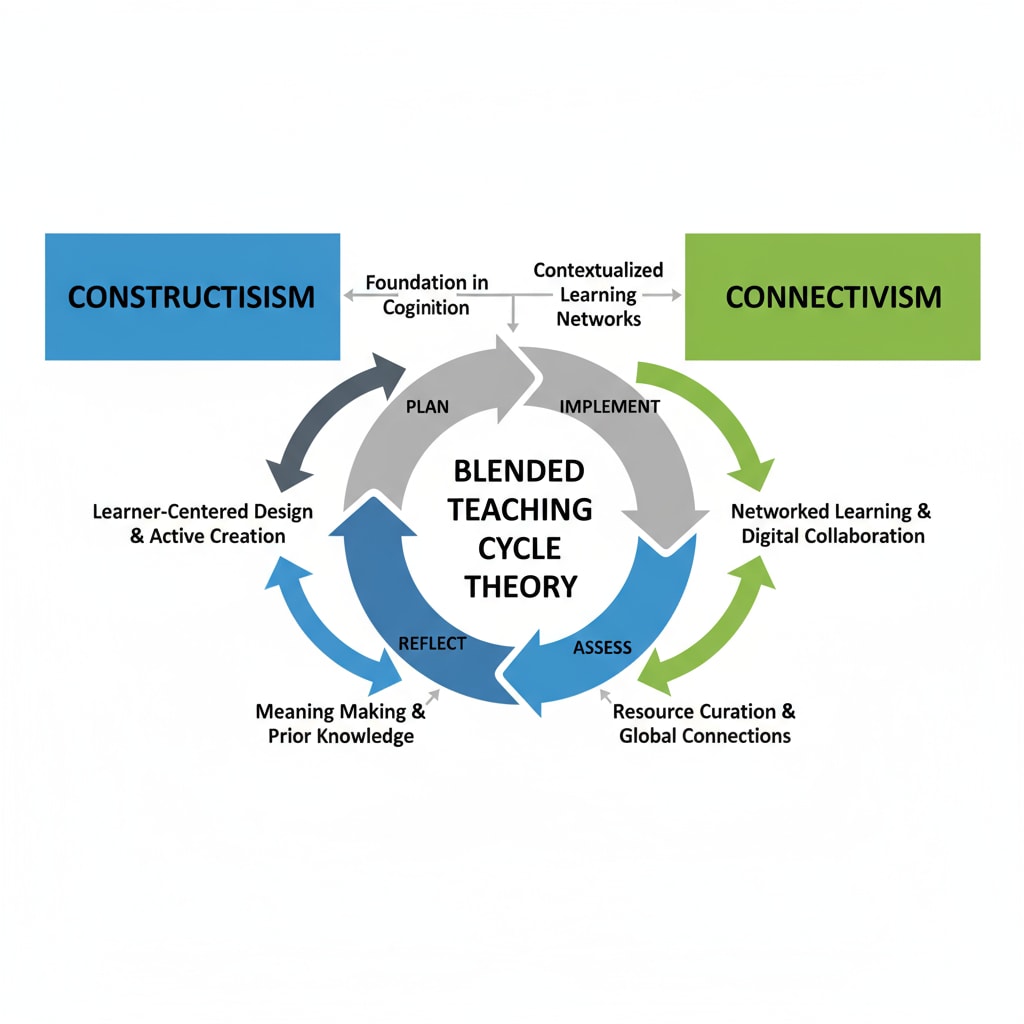The Blended Teaching Cycle Theory is an innovative educational model that effectively combines the best of both worlds – instructional and facilitative teaching methods, thereby creating a harmonious balance between teacher guidance and student autonomy. This theory not only revolutionizes the traditional teaching landscape but also offers a dynamic approach to learning that caters to the diverse needs of students. Let’s delve deeper into its structure, theoretical underpinnings, and the advantages and limitations it presents.
The Structure of the Blended Teaching Cycle Theory
The Blended Teaching Cycle Theory operates through a five-step cyclic model. This structured yet flexible approach provides a roadmap for educators to design and deliver engaging learning experiences. The first step involves setting clear learning objectives. Educators need to define what students are expected to learn, ensuring that these goals are specific, measurable, achievable, relevant, and time-bound (SMART). For example, in a science class, the objective could be to understand the process of photosynthesis within a week.

Next is the delivery of instruction. Here, teachers use traditional methods like lectures and demonstrations to impart knowledge. However, this is not a one-way street. Teachers also incorporate digital resources and interactive elements to make the learning more engaging. The third step is the facilitation of learning. This is where students are given the opportunity to explore, collaborate, and apply what they have learned. Group projects and discussions are common activities in this phase.
Theoretical Foundations of the Blended Teaching Cycle Theory
The Blended Teaching Cycle Theory draws on several theoretical frameworks. One of the key theories is constructivism. This theory posits that learners construct their own knowledge based on their prior experiences and interactions. In the context of the Blended Teaching Cycle Theory, students are actively involved in the learning process, building on what they already know through exploration and collaboration. Another important theory is connectivism. Connectivism emphasizes the role of technology in connecting learners to vast amounts of information and each other. This aligns with the use of digital tools and resources in the blended teaching approach, enabling students to access knowledge beyond the classroom walls.

In addition, the theory also takes inspiration from cognitive load theory. This theory focuses on the limited capacity of the human working memory. By carefully structuring the learning process, the Blended Teaching Cycle Theory aims to reduce cognitive load on students, ensuring that they can effectively process and retain information. For instance, by breaking down complex concepts into smaller, more manageable chunks during the instruction phase.
As we can see, the Blended Teaching Cycle Theory is firmly grounded in these well-established educational theories, providing a solid foundation for its implementation in the classroom.
Readability guidance: The above content has been presented in short paragraphs to enhance readability. Each section focuses on a key aspect of the Blended Teaching Cycle Theory, and images have been incorporated to provide visual aids. Transition words such as ‘however’, ‘next’, and ‘in addition’ have been used to make the flow of the text smooth.


